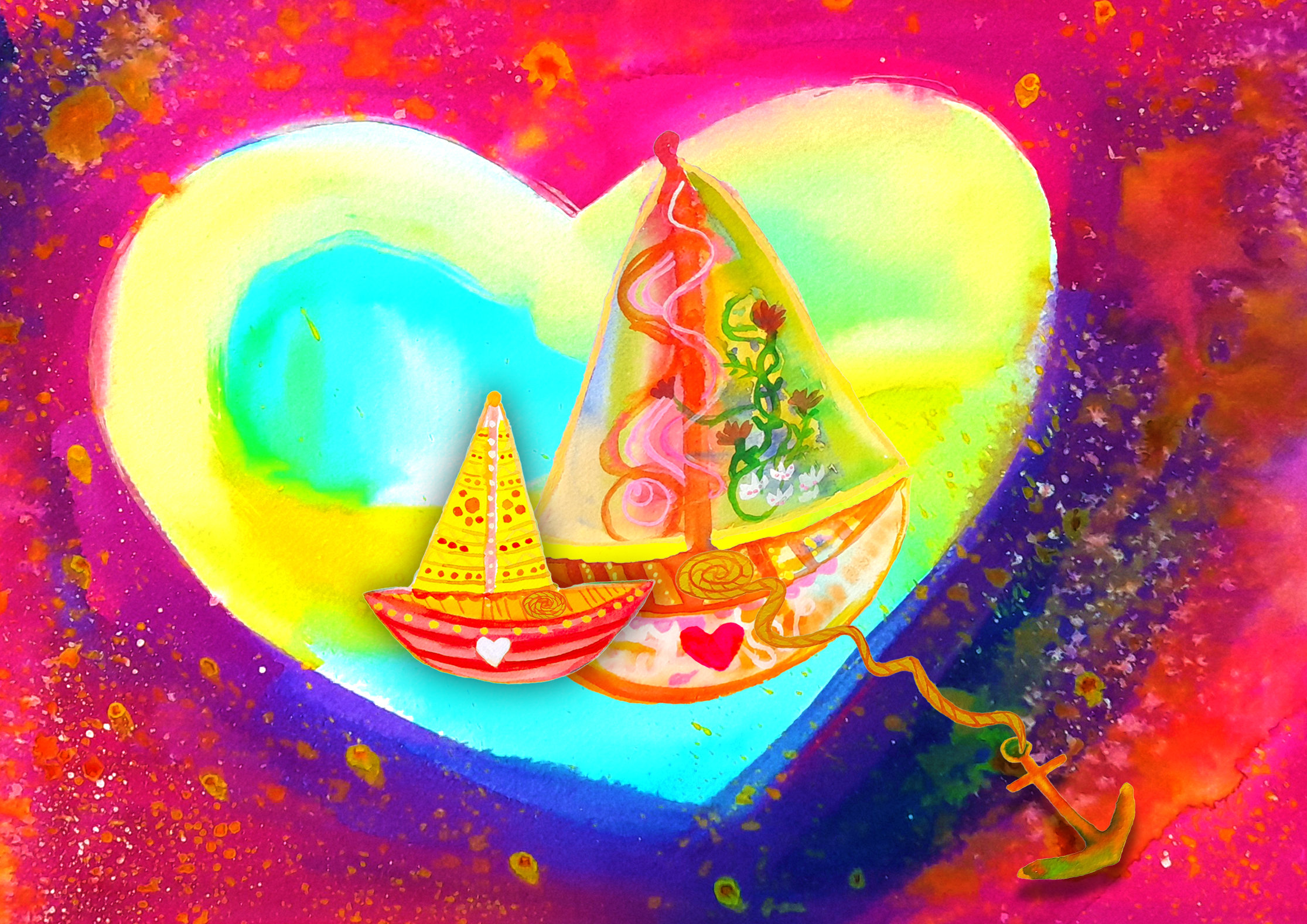Background Notes for Parents and Caregivers
The words “parent” and “caregiver” have been used interchangeably to be inclusive of every child’s circumstance. A “caregiver” may be inclusive of trusted: teachers, coaches, relatives, friends, case workers, therapists or anyone else who may be imagined as a guardian that has the child’s best interests at heart.
Love is fundamentally a universal human need. Love is an action, not just a word. Therefore, the loving actions of caregivers is what creates a secure attachment with the child in their care. We use the rope as a metaphor for this throughout the book series. For the parent, love is about being available, responsive, and actively connected to their child at an emotional and physical level. These actions foster a sense of safety, enoughness and belonging in our children.
In the “Lappy Little Boat” series you may notice certain phrases that are repeated that reinforce the foundations of what creates a secure bond between caregiver and child. For example, dropping anchor represents a way to centre and still oneself during an emotional storm. The phrase ‘drop anchor’ may serve you and the child in your care to identify when there is a need to connect in a compassionate way with yourself and with each other. Most caregivers seem to forget that they too need soothing when an emotional storm erupts. Remember to put your life jacket on first in order to assist your child with theirs.
By practising the listed key words found within this series, you and the child in your care will share a common language that assists with the inevitable challenges that life presents.
Here are some child friendly explanations of these words. Because we respect and value the perspective of a child’s mind, we have included the following Glossary of Terms from our in-house expert Lani (aged 7)
Tips and Activities for Parents and Caregivers
In talking to the child in your care about your attachment, you may like to try the following ideas:
- Feel free to read the book in a way that resonates with the child in your care. You might invite the child to think of a loving and responsive adult in their life whom they feel safe with. You could then replace the word “Mama” in the text with this person’s name as you read the book.
- Remember your imagination can be used too to link you to a kind person, being or place. Take 10 seconds to connect with what you feel in your body so you can remember this calming goodness.
- Initiate a discussion about the rope of love that exists between the two of you (or the child and their caregiver). What qualities would it have? What would it look like/sound like/feel like? Perhaps they could draw or describe it with your help. You could draw yours too.
- Initiate a discussion about the rope of love that is there, regardless of whether the water is choppy or calm. What might choppy seas look like in your relationship with them e.g. when you are upset with them/when you are absent. What might calm seas look like in your relationship? You may think about examples of situations that have already occurred.
- If you were present as a caregiver during the pregnancy, discussing how the rope of love began to grow even back then. Describe how you talked to them in the womb; felt them move; listened to them; saw them during the ultrasound. You may even have some pregnancy photos to share.
- Invite the child to draw a picture of all the people in their life whom they have an emotional connection to and using string, create a web on the page between the picture of the child and their significant others. You could use photos and a cork board as well for this. You might like to include pets and loved ones who have moved away or died.
- The whole family might like to use a ball of string to display their rope of love between all combinations of family members. Even when you get knotted up and a bit messy – you are still connected with love.
- When the child in your care is upset, try saying “let’s drop anchor” and engage in a soothing activity together that will assist in calming the mind and body e.g. a hug; a book; breathing; tai chi; yoga. You could model this for the child when you yourself need to drop anchor.
- Simply letting the child in your care know that if they need help, they can call on you and you will respond, just Mama responded to Lappy.
- Validating the child’s feelings will help you to strengthen the attachment. Try and imagine how they are feeling and reflect this back to them. For example, if the child is upset at not being able to find a favourite toy you may say something like “I can see you are really worried about not finding your toy. I know how much it means to you and how much you like to cuddle it when you go to bed.” Then ask the child what they might need in the moment. “What can I do right now to help you?”
Glossary of Terms
Be Kind
is about using kind words and helpful actions, with a friendly, happy face, that helps others to feel good about themselves.
Drop our Anchor
is about stopping, breathing, going to a calm place, having a hug or hugging yourself, then coming back and trying again.
Heart
is where our love and kindness come from.
Love
is a warm safe feeling that makes you want to hug and be close to safe people and animals.
Sail Strong
is to do what feels right inside and stick to what you believe in.
Stay Brave
is about trusting yourself even when you first feel scared to try something new.
Strong Glistening Rope
reminds you that you can have a connection to someone or something special in your life forever.

